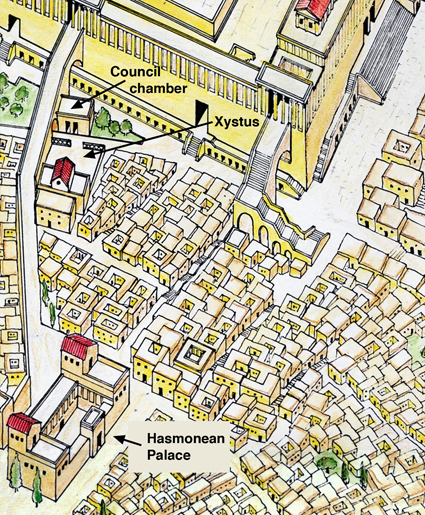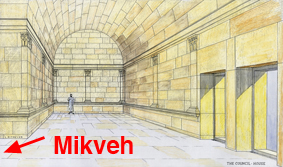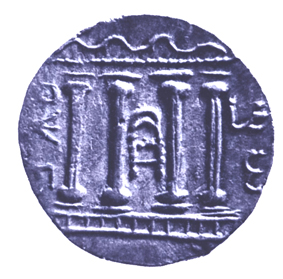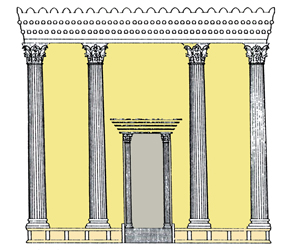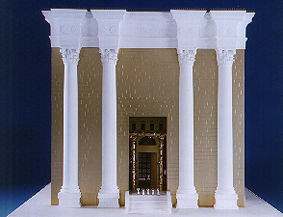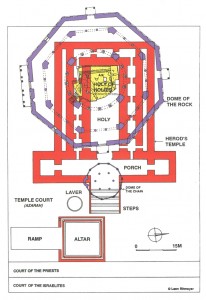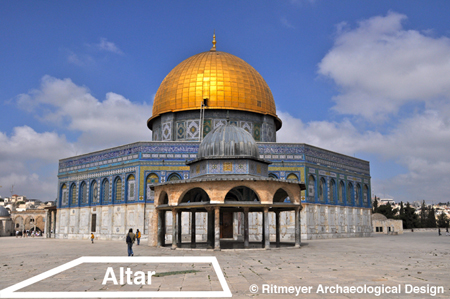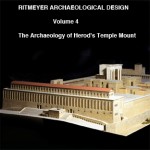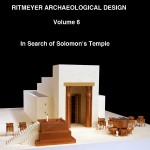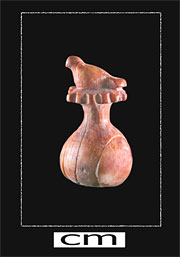In the Jan/Feb 2009 issue of Biblical Archaeology Review, an article was published by Ehud Netzer, called “A New Reconstruction of Paul’s Prison”. Netzer is a respected and successful architect/archaeologist and well-known for his excavations of Herodium and Hasmonean and Herodian Jericho and other Herodian sites. Recently he amazingly found the long-lost tomb of Herod the Great.
In the last few years he also tried, less successfully in my opinion, to reconstruct Herod’s Temple Mount. His reconstruction proposal for the Antonia Fortress is a clear example of ignoring important historical sources and archaeological evidence. Here is his reconstruction: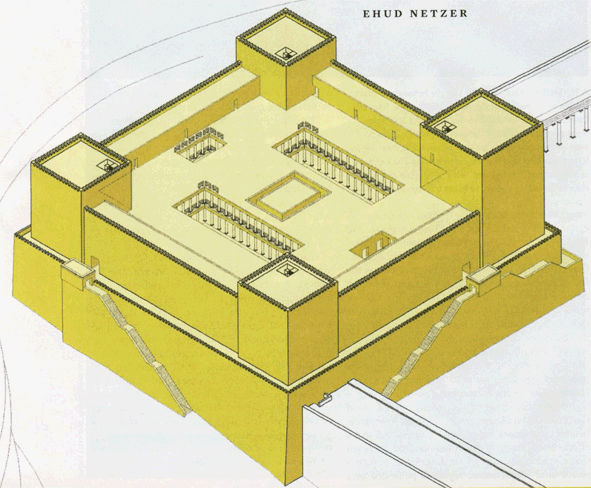
As far as historical sources are concerned, Josephus (War 5.238-246) wrote that “The tower of Antonia lay at an angle where two porticoes, the western and the northern, of the first court of the Temple met; it was built on a rock fifty cubits high and on all sides precipitous.”
The reconstruction of Netzer does not meet these two historical requirements. The northern and western porticoes don’t meet and no rockscarp is to be seen in Netzer’s drawing on the south and west sides. Indeed, there never were precipitous rockscarps in the area occupied by the southern and south-eastern part of his reconstruction.
There is archaeological evidence that the two porticoes did in fact meet. Sockets for the roof beams of the northern portico can still be seen today in the northwest corner of the Temple Mount, see Ritmeyer, The Quest, Revealing the Temple Mount in Jerusalem, p. 130), see:
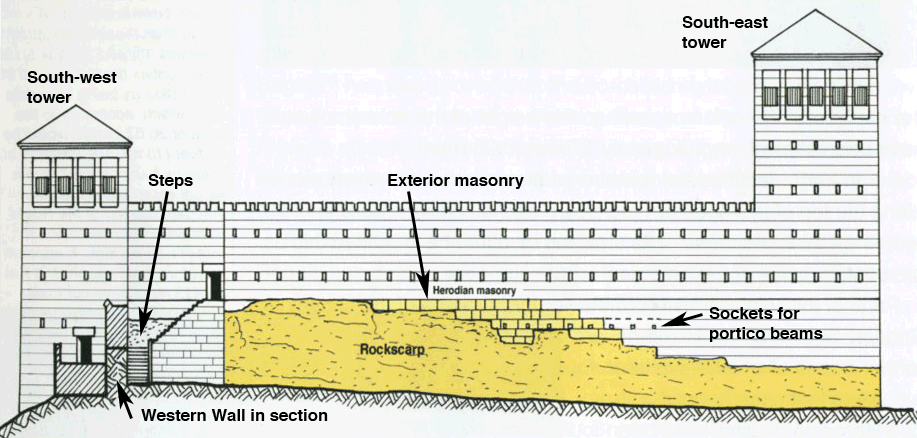
These sockets were placed in exterior Herodian masonry, which is visible high above the still-existing rockscarp. This masonry consists of ashlars with the typical Herodian margins, which were used for exterior masonry only. This proves that this rockscarp with its Herodian masonry was an external wall, namely the southern wall of the Antonia Fortress and not an interior wall. This also shows that the northern portico of the Herodian Temple Mount ran in front of the southern facade of the fortress, enabling it to “meet” with the western portico, as described by Josephus.
Netzer places the south-western corner of the fortress at small projection in the Western Wall. This projection exists, possibly because of the lay of the bedrock, but it is too insignificant a projection for the south-west tower of the Antonia. There is a much larger projection to the north, which is completely ignored by Netzer. It can be seen in the western side of the north-west corner of the Temple Mount and at the end of the Western Wall Tunnel. This projection has been mapped by Gregory Wightman (Temple Fortresses in Jerusalem, BAIAS, Vol. 10, pp. 7-35) in this diagram:
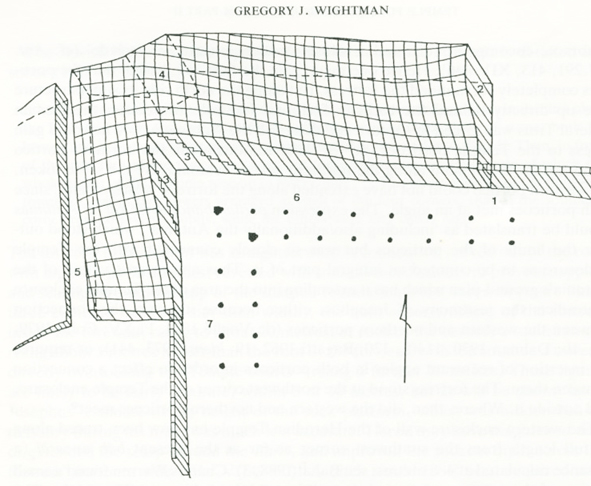
It shows that the south-west tower projected much more from the Western Wall than shown in Netzer’s reconstruction. All of these historical and archaeological data, ignored by Netzer, have been incorporated into my own reconstruction of the Antonia Fortress as shown in this model:
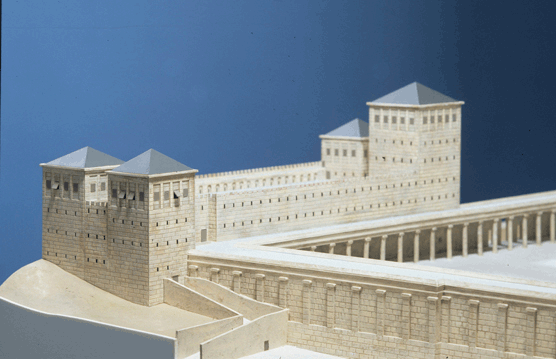
Original Herodian paving stones were, until recently, visible in the north-west corner of the Temple Mount. Netzer’s reconstruction does not relate to this pavement. Netzer’s Antonia plan is square, although the north-west corner of the Temple Mount is in fact not a right angle, but an acute angle of approximately 86 degrees.
In 1975, P. Benoit (The Archaeological Reconstruction of the Antonia Fortress, Jerusalem Revealed, 1976) has brilliantly shown that the Antonia was located exclusively on the rockscarp at the north-west corner of the Temple Mount. Prior to this time, several scholars, such as De Vogüé and Vincent, had promoted a larger Antonia which projected inside the Temple Mount. It is a pity to see that Netzer has regressed to that earlier and by now obsolete reconstruction of the Antonia Fortress.


